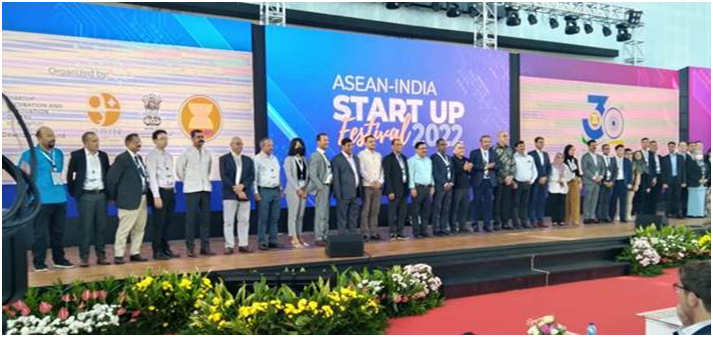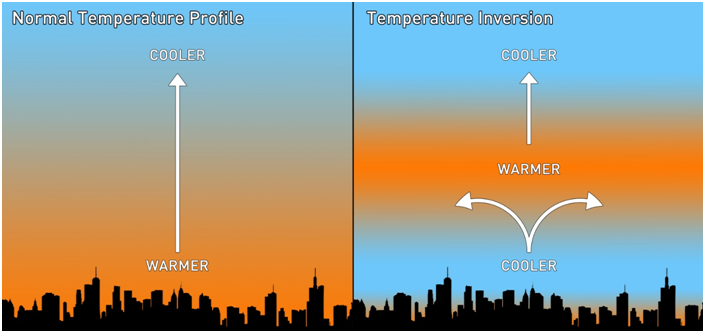Singapore-India Maritime Bilateral Exercise Simbex - 2022 (GS Paper 3, Defence)

Why in news?
- The Indian Navy is hosting the 29th edition of the Singapore-India Maritime Bilateral Exercise (SIMBEX) at Visakhapatnam.
Details:
- SIMBEX-2022 is being conducted in two phases – Harbour Phase at Visakhapatnam followed by the Sea Phase in Bay of Bengal.
- The Harbour Phase witnessed extensive professional and sporting interactions between the two navies including cross deck visits, Subject Matter Expert Exchanges (SMEE) and planning meetings.
About SIMBEX:
- SIMBEX series of exercises began in 1994 and were initially known as Exercise Lion King.
- The scope and complexity of the exercise has risen substantially over the past two decades to include advanced naval drills covering a wide spectrum of maritime operations.
Significance:
- The exercise exemplifies the high level of cooperation between India and Singapore in the maritime domain.
- It also highlights the commitment and contribution of the two nations towards enhancing maritime security in the Indian Ocean Region.
1st ASEAN-India Start-up Festival 2022
(GS Paper 2, International Organisation)
Why in news?
- Recently, the Secretary, Department of Science and Technology, inaugurated the 1st ASEAN-India Start-up Festival (AISF) in Bogor, Indonesia.
- The AISF is part of a series of events to commemorate the 30th Anniversary of the ASEAN-India diplomatic relationship.

Stakeholders:
- The festival is part of the over-all ASEAN-India Science, Technology and Innovation Cooperation program between the ASEAN Committee on Science, Technology, and Innovation (COSTI) and the Department of Science and Technology (Govt of India).
- It is supported under the ASEAN-India Science and Technology Development Fund (AISTDF) of Govt of India which is jointly contributed by Department of Science and Technology and Ministry of External Affairs (MEA).
Key Highlights:
- Comprising of four main events; startup exhibitions; seminar and talk show; G2G meetings and B2B meetings, as well as startup pitch battle, it has brought together government officials, startups, research institutes, universities, inventors and innovators, and other financial institutes.
- The festival provided a platform to further expand the national startup ecosystem to global networks, seeking cooperation for cumulative growth and creating of more opportunities.
- The festival commemorates and strengthens cooperation and collaboration in science, technology, and innovation between the ASEAN countries and India.
Way Forward:
- As a developing nation, India is currently dedicated to harnessing path-breaking innovations for comprehensive socio-economic growth. The ASEAN India partnership will enable concrete impact for this endeavor.
European Union approves ban on new combustion-engine cars from 2035
(GS Paper 3, Environment)
Why in news?
- Recently, the European Parliament and European Union (EU) member countries have reached a deal to ban the sale of new gasoline and diesel cars and vans by 2035.
“Fit for 55" package:
- EU negotiators sealed the first agreement of the Bloc's “Fit for 55" package set up by the Commission to achieve the EU's climate goals of cutting emissions of the gases that cause global warming by 55% over this decade.
- The deal is a “clear signal ahead of the UN COP27 Climate Change Conference that the EU is serious about adopting concrete laws to reach the more ambitious targets set out in the EU Climate Law."

Why transport sector?
- Transport is the only sector where greenhouse gas emissions have increased in the past three decades, rising 33.5% between 1990 and 2019. Passenger cars are a major polluter, accounting for 61% of total CO2 emissions from EU road transport.
- The EU wants to drastically reduce gas emission from transportation by 2050 and promote electric cars, but the region is lacking the appropriate charging stations.
Significance:
- This is a historic decision as it sets for the first time a clear decarbonisation pathway, with targets in 2025, 2030 and 2035 and aligned with EU’s goal of climate neutrality by 2050.
- World leaders agreed in Paris in 2015 to work to keep global temperatures from increasing more than two degrees Celsius (3.6 degrees Fahrenheit), and ideally no more than 1.5 degrees C (2.7 F) by the end of the century.
What’s next?
- The EU Parliament and member states will now have to formally approve the agreement before it comes into force.
Thermal Inversion & air pollution in Delhi
(GS Paper 3, Environment)
Context:
- Winter in Delhi is known for bad air quality, often leading to a surge in health issues. After recording the cleanest day post-Diwali in years, the National Capital’s air quality again deteriorated to “very poor”.
- While stubble burning, vehicular emissions and dust contribute to the toxic air in Delhi, factors such as change in weather conditions, temperature inversion, and wind direction also play a major role in the surge in pollution levels during winter.
What is the temperature or thermal inversion that affects Delhi in winter?
- Under normal conditions, the higher the altitude the lesser the temperature. But this phenomenon can change due to changes in weather and even topography.
- Temperature or thermal inversion is when the temperature increases along with the higher altitude.
- The cap is a layer of relatively warm air aloft (above the inversion). Air parcels rising into this layer become cooler than the surrounding environment, which inhibits their ability to ascend.
- The phenomenon mostly occurs in winter when “mist and fog become trapped in the cooler air low down”, but inversions can happen throughout the year.

How thermal inversion affects pollution?
- As warm air rises, the air under the inversion cannot escape as it is cooler, and thus, it traps the pollutants closer to the ground, instead of dispersing them higher in the atmosphere.
- With a dip in temperature, the inversion height, the layer beyond which pollutants cannot diffuse into the upper layer of the atmosphere is lowered.
- The layer with “higher temperature acts as a cover on the colder air that is in contact with the ground and in which pollutants concentrate. This situation gives rise to the smog or “pollution beret”, visible from several kilometers around and that usually takes prepared with a descent in the levels of air quality”.
- This temperature inversion affects the pollution levels in Delhi every year during winter.
- Besides temperature inversion in the National Capital, the dip in wind speed during winter also leads to the concentration of pollutants in the air.
Delhi’s pollution woes:
- The calm wind conditions are likely to continue in the National Capital and combined with the pollutants from the burning paddy fields in Punjab and Haryana, the air quality is expected to remain “very poor” till the end of October.
- The weather conditions can worsen in Delhi in the coming days. Till now, Delhi was seeing good wind speed, which was controlling the pollution levels. As soon as winds become calm, local emissions are enough to cause the AQI to reach ‘very poor’.





